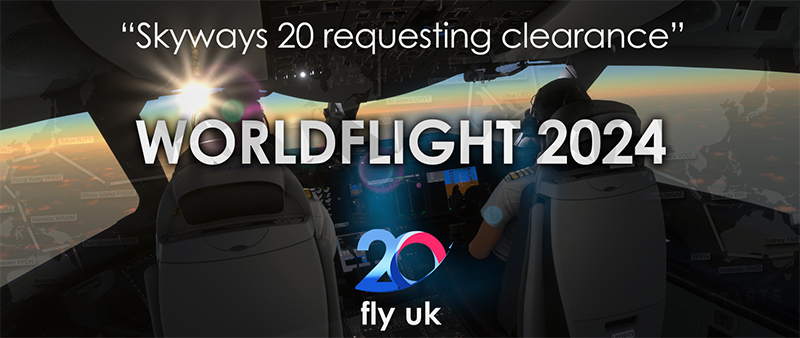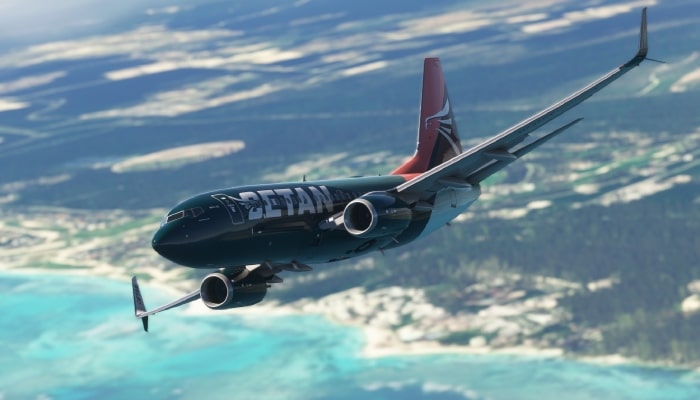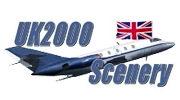Circle to Land Approaches in the Simulator
Ross explains how pilots can improve their knowledge of their aircraft and challenging approaches by joining one of our events.
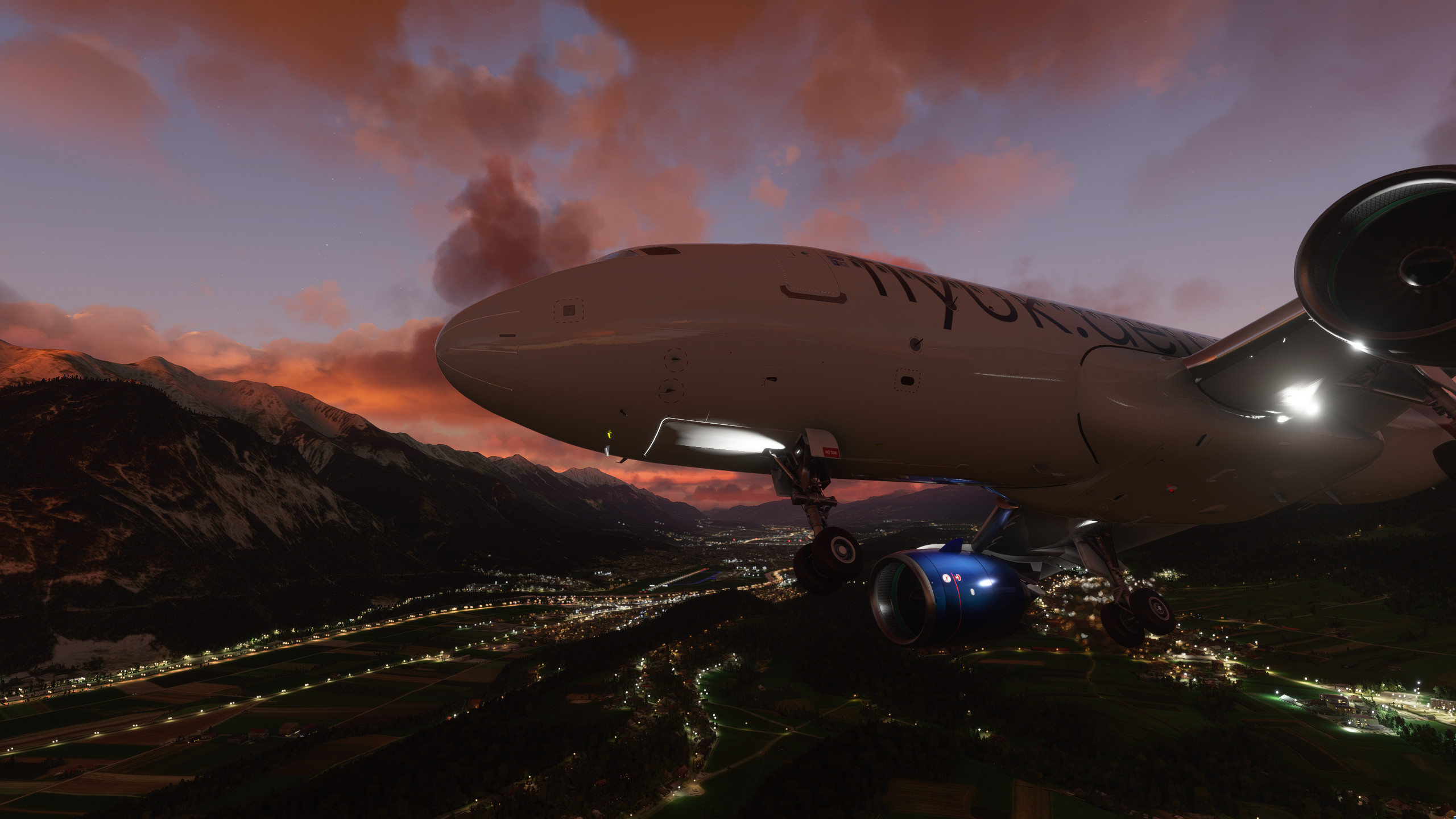
Fly UK runs a number of events for its members, some of which are focused on challenging approaches. These events provide a platform for our members to learn more about the aircraft that they’re flying, learn new approaches and test their piloting skills. You can join us on these events on Mondays.
One such challenging approach is the ‘circle to land’ approach and doing these in a simulator presents challenges around both your situational and positional awareness. It’s not like we can just turn our heads and look out of the window (unless of course we’re doing it in virtual reality.) For those of us restricted to two dimensions using a monitor, there are ways of managing these approaches by learning to use features built into the aircraft itself.
What is a circle to land approach?
Circle-to-land is a manoeuvre initiated by the pilot to align the aircraft with a runway for landing when a straight-in landing from an instrument approach isn’t possible or desirable. It will be performed only after air traffic control (ATC) authorisation has been obtained and the pilot has established and maintained the required visual reference to the airport. Circling approaches are required for a few reasons, such as strong tailwinds, obstacles, high descent angles or the final approach segment exceeding 30 degrees from the approach runway.
The circling manoeuvre is the visual phase of an instrument approach.
What are the challenges?
One of the key challenges is visibility. In real-world flight, the pilot flying would maintain continual visual contact with the runway while also looking for visual reference points during the manoeuvre. This is easy for a real pilot to do, just by turning their head and looking out of the windows. It’s not so easy for a pilot in a simulator, for a few reasons:
- pilots flying using a monitor will be limited in the amount of time they can spend looking out of the window, as they can only look in one direction at a time and will need to spend time with the camera oriented to their instruments;
- unless flying using a shared-cockpit add-on, pilots will be doing the job of both the pilot flying and the pilot monitoring; and
- most of the simulator scenery is likely to lack specific visual reference points that the pilot flying would normally be looking for.
So how can we work around these challenges?
To understand what comes next, you’ll need a basic understanding of an instrument approach landing. You should be familiar with the aircraft that you’re flying, using the navigation display (ND), recognising and tuning frequencies for a non-directional beacon (NDB), and setting your aircraft up for an instrument landing system (ILS) landing. If you need any help with these, you can contact our training academy for some one-on-one tuition.
We’ll be flying a 737-800 with in-depth system simulation for the approach. Importantly, this aircraft has automatic direction finder (ADF) equipment which is necessary for tuning an NDB frequency. The method may vary depending on the aircraft type you’re flying and the level of the simulation of it.
The ND which you can see below has been setup for the arrival into Innsbruck using the area navigation (RNAV) approach into runway 26, for a circle-to-land on runway 08.
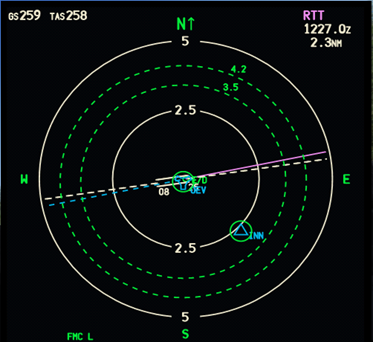
We’re using distance measuring equipment (DME) to monitor our distance from the localizer (LOC) DME, identified on the chart as OEV. We're using the Innsbruck Jeppesen charts from Navigraph:
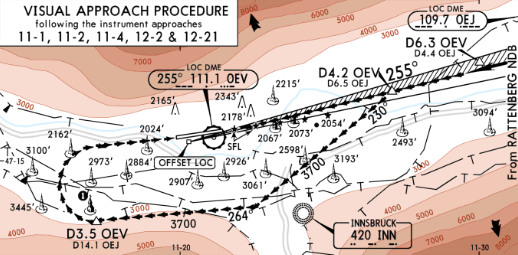
Having departed the RTT NDB, we would head toward the waypoint ADWIG. We establish ourselves on the OEV localizer and descend on a heading of 255 degrees, descending as per the information on the charts we’d be using. At this critical stage the flight crew would be scanning instruments and terrain. As one real-world pilot puts it, “scan, scan and scan again!”
Upon reaching D4.2 from the OEV localizer (the outer green dashed ring on the ND, labelled 4.2) we would turn left onto a heading of 230 degrees at an altitude of 3,700 feet, towards the INN NDB which will have been tuned in by the pilot. This is followed by a right turn onto the downwind heading of 264 degrees, before turning onto final at D3.5 from OEV. We would also need to lose 800 feet in altitude while in a 30-degree bank, which isn’t easy to master!
Planning is the most important thing for a pilot to do. Most crews will have notes sitting around reminding them of key points, minimum safe altitude (MSA), turn timings, non-normal information, and so on. Early configuration of the aircraft is also crucial to reducing pilot workload during the most critical stages of the manoeuvre.
We’ve only skimmed over the procedure we follow in this blog and there are many other factors in the approach which aren’t covered. We cover these during our events with all the pilots taking part so that we all understand the approach we’re about to perform. Innsbruck is just one example of a circle-to-land approach, along with other circle-to-land examples such as Calvi, Salzburg, Tivat, Samos and Genoa.
There are other challenging approaches too, such as Madeira, Toncontin, Eagle County and, of course, my personal favourite, the “Old” Kai Tak approach… Look out for that checkerboard!
How can I learn the circle-to-land approach?
While much of this knowledge can be found online in forums and on YouTube, there’s something to be said for learning in a group. One of the major advantages of learning the procedures with other members is that, rather than watching videos or reading about these procedures alone, pilots can interact with each other and discuss the various issues they’ll face while flying the approach, often as the issues occur, in the various aircraft being flown that flight.
If you’re already a member of Fly UK, you can book on an event on our events page.
If you’re not yet a member, you’ll need to join Fly UK first.
Comments
This is a community-moderated forum.
All post are the individual views of the respective commenter and are not the expressed views of Fly UK Virtual Airways.
By posting your comments you agree to accept our Terms & Conditions.


